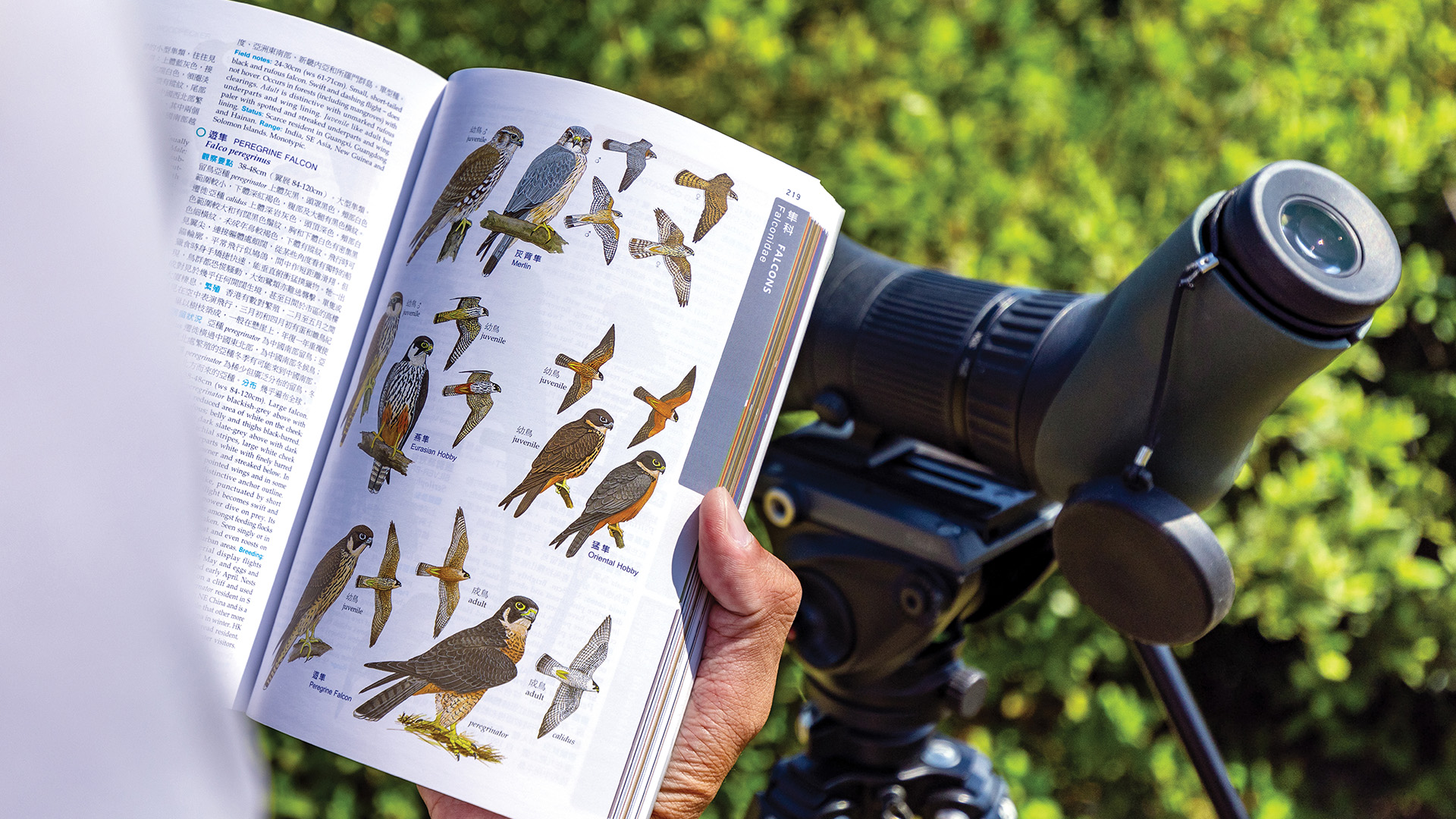
Birdwatching is not only a peaceful and stimulating way to relax, but according to Hong Kong ornithologist Jay Kong, it can also connect us with nature at a deeper level. “Birds deliver Mother Nature’s message to us — if you pay enough attention,” he says.
The research officer at the Hong Kong Birdwatching Society says an area with a thriving variety of birds usually suggests it’s part of a balanced, biodiverse environment. “In other words, we can learn about the current state of the environment and our planet by observing birds in their natural habitats,” Jay says. “And that is essential for the future of the human race.”
“I find birds so fascinating,” he says. “These small animals are so powerful and resilient, especially when they migrate, season after season. A bird such as a warbler can weigh less than 10 grams — lighter than a finger — but every spring and autumn, they fly thousands of kilometres to their breeding or wintering grounds. We see birds wintering here in Hong Kong, but have no idea how they got here or what exact route they took. It’s intriguing.”

Attractive location for migratory birds
Hong Kong’s unique geographical position makes it an ideal location for spotting birds. “Despite being just a small spot on the map, Hong Kong is a coastal city, near the middle of the East Asian-Australasian Flyway,” Jay says. This flight path is used by enormous numbers of birds migrating between their breeding and wintering grounds across an area that includes China, Japan and Southeast Asia, down below New Zealand and across to Alaska.
Hong Kong’s forests have been recovering in recent decades after periods of major deforestation, especially during the Second World War. They continue to attract birds from around the Guangdong area, some of which even decide to stay.
In recent years, notable species that have settled here include the magnificent green Chinese barbet — recognisable for its rainbow-hued face and loud call — which was first spotted in Tai Po Kau, Hong Kong’s most mature forest, in 2014. It is now more widespread and can be seen in Tai Po Kau and adjacent woodlands,” Jay says.
Where to start birdwatching
Novice birdwatchers can start by looking for birds around water. “You’ll find more bird species in wetlands since water supports lives, and places with rich biodiversity, such as the Mai Po Nature Reserve,” he says. “You can probably spot over 100 species of birds during a casual walk there during migration season.”

Meanwhile, Tap Mun and the islands nearby are the breeding grounds for three different species of terns: the more common Black-naped and Bridled Terns, as well as the pretty Roseate Terns, known for their vibrant-coloured bills and legs. They come to Hong Kong during the breeding season. “The islands around Tap Mun are ideal, as they prefer to breed on uninhabited, barren islands without much cover, so they won’t be attacked by land predators such as snakes or cats,” he says.
The open countryside around Tap Mun’s Hilltop Pavilion offers a good vantage point for birdwatching. You may spot Eastern Yellow and White Wagtails, named after their habit of pumping their tails; strolling Olive-backed Pipits; predatory shrikes, known for their loud shriek-like call; and small seed-eating buntings. You may even glimpse dazzling Blue Rock Thrushes and larger Pacific Reef Herons foraging along the coastline. “Since there are no obstacles blocking the view, you can see birds from a far distance,” he says.
“If you wish to see majestic seabirds, then you should visit the city’s eastern waters,” he adds. Many birdwatchers take an annual boat trip to Tap Mun specifically to see these terns as they breed and hunt for fish in the waters around the island. “As the ferry whirls up sea foam, lots of fish may get shocked and jump out of the water, making them easy targets for terns following the boat,” Jay says. “I remember my first time there and the incredible feeling of being surrounded by hundreds of Black-naped and Bridled terns. It’s a very rare sight in Hong Kong. But you must keep your distance so you don’t disturb them.”

He says autumn, winter and spring are the best times for birdwatching in Hong Kong because many species of birds call Hong Kong home in winter. In spring and autumn, migratory birds will pass by Hong Kong and they tend to be less fussy about where they stay temporarily, so you may even spot them in places with sparser forests or even in the middle of city.
A pretty, forested area around Pak Sha O village, leading up to Lai Chi Chong in Sai Kung Country Park, is another place that attracts migratory birds, Jay Says. “Lai Chi Chong has large areas of grassland, which attract herds of cattle,” he says. “So, you are likely to spot birds that love grass plains, and birds that love to feed on insects drawn to cattle, such as the Eastern Cattle Egret. They even like to rest on the backs of cattle; the cattle don’t mind at all!”

A lifelong, fulfilling hobby in the great outdoors
“Birdwatching is so exciting to me because you never know what you will encounter,” Jay says. “It’s become a lifelong passion. Every trip is unique and special: from the species you spot to the different bird songs you hear.
“In the beginning, like many people, I approached birdwatching as if I was trying to ‘collect’ every single species. But eventually, I realised that with birdwatching, the focus should always be on nature, rather than on yourself.
“I hope more people will take up this hobby and learn to appreciate the true beauty of nature,” he says.

6 tips from Jay Kong for novice birdwatchers
Get a pair of binoculars.
Get a bird field guide.
Pay attention to the birds you meet every day in the city.
To find birds, follow their calls and songs.
Simply enjoy the immersion of nature when watching birds. Do not feel disappointed even if you don’t find any interesting birds.
The welfare of birds comes first. Avoid disturbance to the birds and the environment.
Information in this article is subject to change without advance notice. Please contact the relevant product or service providers for enquiries.
The Hong Kong Tourism Board disclaims any liability as to the quality or fitness for purpose of third party products and services; and makes no representation or warranty as to the accuracy, adequacy or reliability of any information contained herein.





